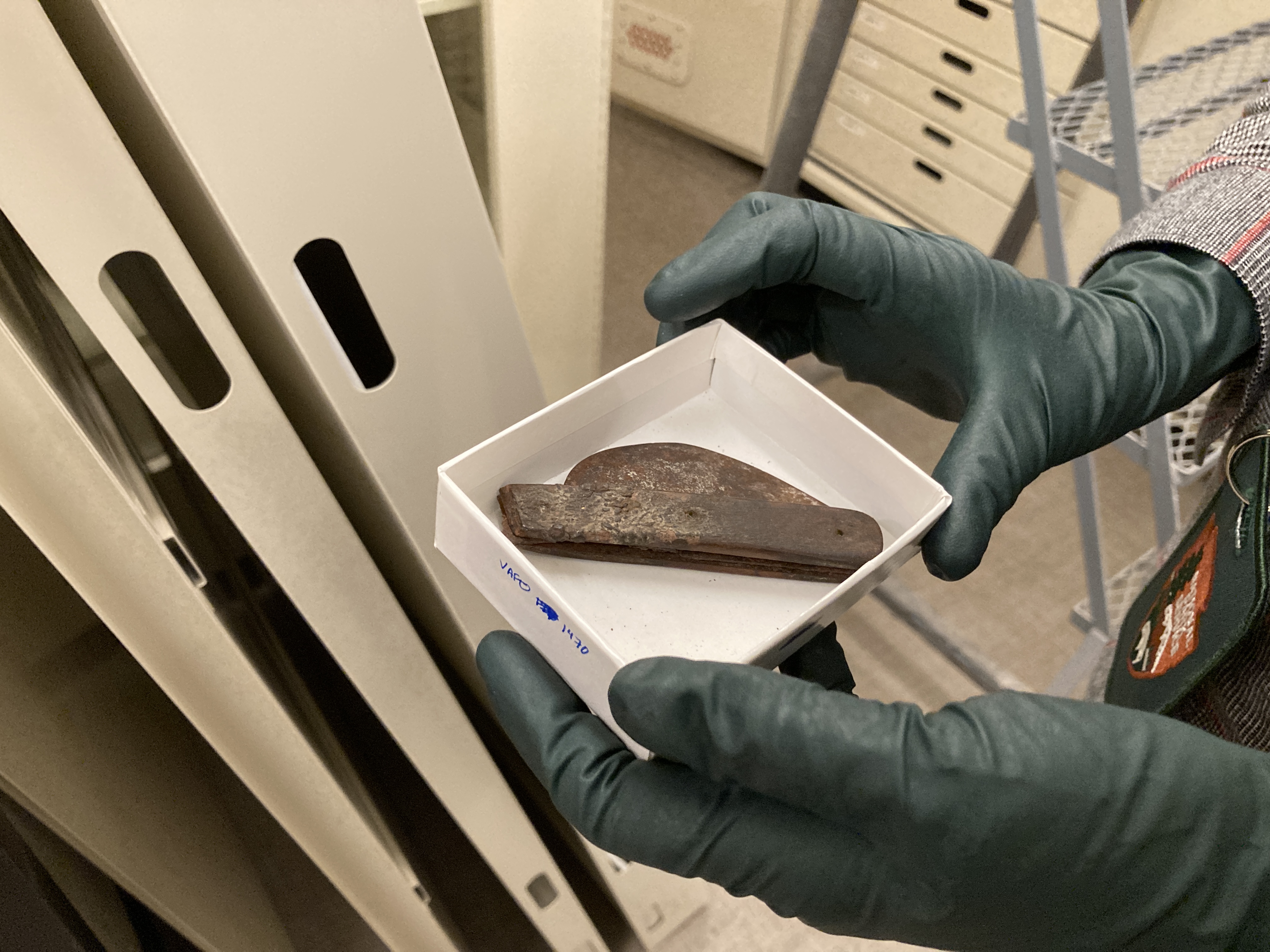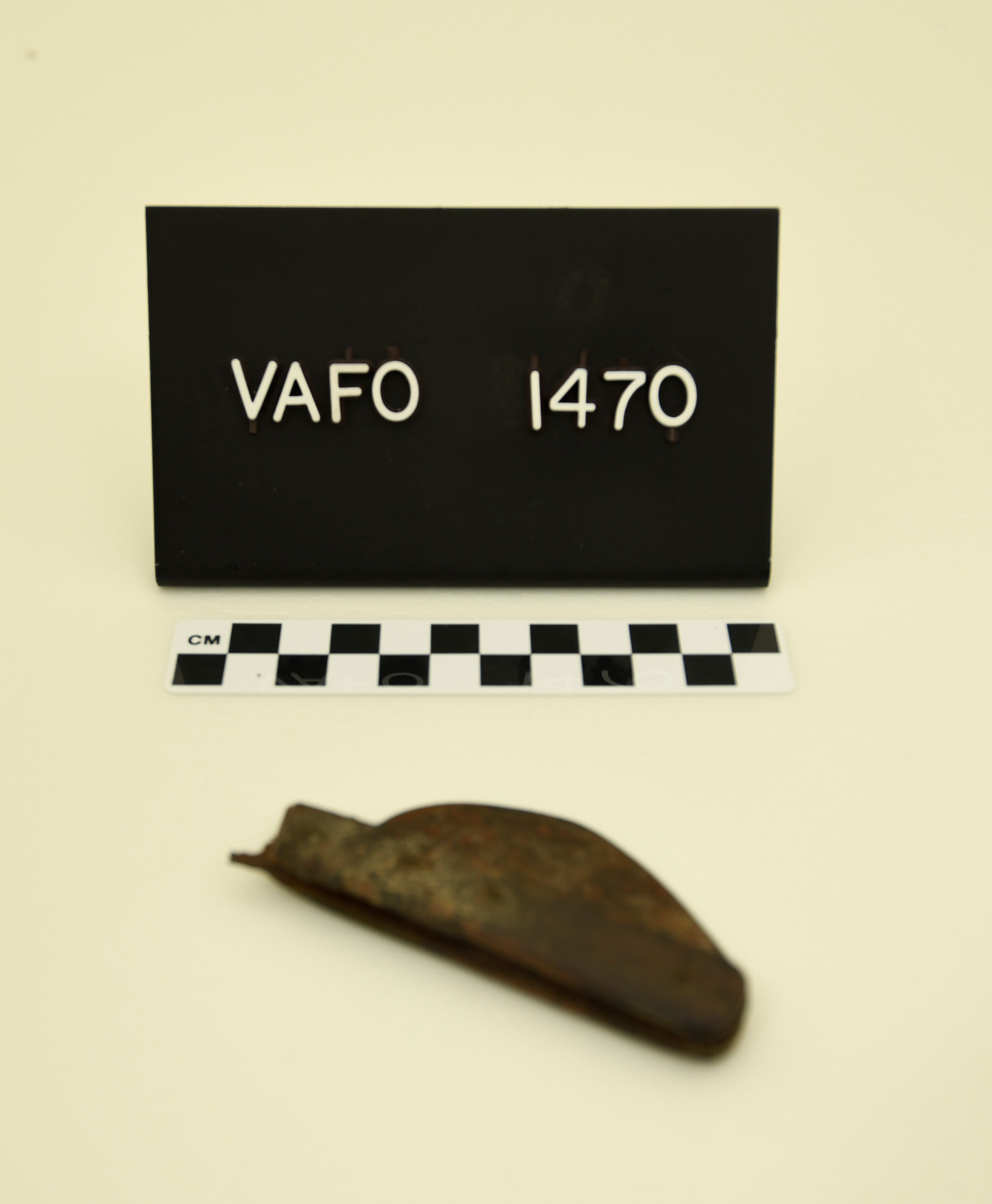Last updated: July 28, 2025
Article
Digitizing Artifacts from the Museum Collections at Valley Forge National Historical Park
The George C. Neumann Collection
Valley Forge National Historical Park is home to a diverse collection of artifacts and documents related to the 1777-1778 encampment at Valley Forge and to the soldiers and officers who fought in the American Revolutionary War.
One of the most significant collections housed at Valley Forge is the George C. Neumann collection, which is comprised of approximately 1,600 historic objects. These items are split up into four groups: firearms, edged weapons, pole arms, and accouterments.
Photographing Historic Objects
Lexi Coburn, a Revolutionary War and Iron Industry Museum Collections Intern at Valley Forge, spent the summer of 2021 working among the artifacts of the George C. Neumann collection. Much of her work involved photographing historic objects one by one and adding them to the digital records in the Interior Collections Management System (ICMS).
 Coburn photographs an artifact using a neutral white backdrop. NPS Photos / G. Purifoy
Coburn photographs an artifact using a neutral white backdrop. NPS Photos / G. Purifoy
Storing Artifacts
Historic objects are stored in a climate-controlled environment and are always handled with gloves and lots of care. Smaller artifacts are often stored in tiny boxes and set in shallow drawers. Every item has a unique identification number, which can usually be found on the artifact itself.


Drawers containing various metal objects including spurs, ice creepers, and musket ball molds.

A drawer containing folding knives.
Handling and Digitizing Artifacts
Each artifact must be carefully removed from the drawer and its identification number verified before being moved to the photographing area. Prior to snapping the photo, the object’s ID number is written on a name plate using manual number tiles, and a checkered scale marker is placed near the item to convey its size.


Coburn carefully removes an artifact from the drawer and finds its ID number.


Coburn writes the ID number on the name plate, places the object, and takes the photographs.


Item number 1470 – “Straight razor with wooden handle. Blade was originally in fixed position but now swivels due to break in metal.” NPS Photos / L. Coburn
Multiple photographs can help to show the object from additional angles, and each artifact is documented by two or three photographs on average. Curatorial staff could photograph around 250 small items like these folding knives in a single day, but the most time-consuming part of digitizing historic objects is the final step.
Updating the Collections Database
After photographing a drawer of artifacts for example, the many hundreds of images are moved from the digital camera to a computer, the files are edited and renamed, and finally the photographs are uploaded into the ICMS database. The addition of these photographs to the digital records in the database allow collections staff, curators, archivists, and researchers to locate individual objects within the collections more easily and efficiently.

